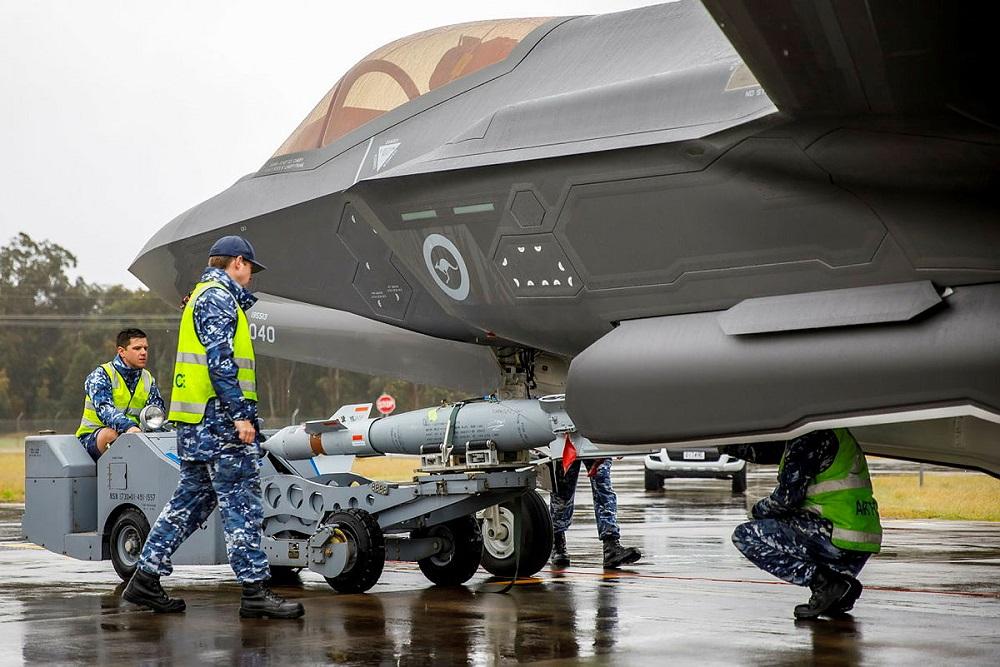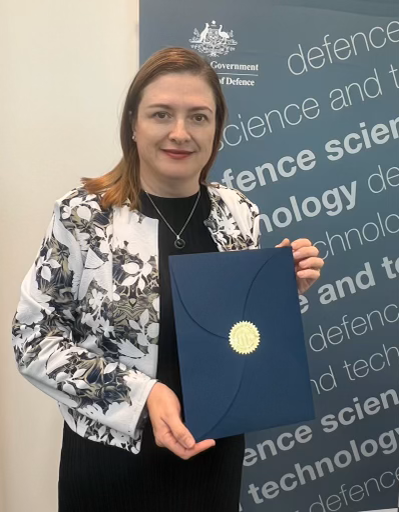Chief defence scientist: We must get emerging technologies into the hands of our war fighters faster
Posted By Brendan Nicholson on April 3, 2024 @ 06:30

For chief defence scientist Tanya Monro, the concept of ‘minimum viable capability’ is critical to shifting Australia’s thinking on how to get cutting edge technologies into the hands of military personnel fast enough to give them an advantage on the battlefield.
Professor Monro believes a major mindset change is needed to develop new capabilities much more quickly. ‘Our thinking about a capability needs to be how can the war fighter use it, not in some ideal situation in 10 years when a piece of equipment or a platform is perfect, but in three months, in six months?’ That provides the clarity and the inspiration needed for the R&D community to know what they need to get after.
Last year’s defence strategic review (DSR) provided the scaffolding for a different approach to defence capability, says Monro. ‘It clearly articulates the priorities for innovation and science and technology. I think key leaders understood and knew of great examples in the past where some scientific breakthrough would mean a capability leap, but I don’t think they had a way of thinking about it systematically. That’s a significant shift.’
Monro says the DSR’s identification of innovation as one of six priorities, and that being followed up with substantial resources and a shift of intent through the creation of the Advanced Strategic Capabilities Accelerator (ASCA) is a critical development. There’s also a conceptual shift that includes an acceptance of the idea that introducing a minimum viable capability now is better than waiting 10 years until it’s perfect.
‘The shift that I believe we’re driving through the system—as a clear response to the DSR—is from trying to develop technologies that Defence says need to be developed, to solving problems that Defence decides are the highest-priority problems. And that’s a profound shift.’
The Defence, Science and Group (DSTG), which Monro heads, is key to making that work. ‘We’ve been headed down this path through our STaR Shots [1], but now it’s clear that we get the best out of the whole Australian system by harnessing creativity and ingenuity, and respecting industry enough to tell them what problems we’re trying to solve, creating a mechanism by which we can bring good responses into Defence solutions.
‘That’s profound because historically Defence would go out and look for technologies without providing that partnered pathway that allows industry to understand what Defence needs and develop their capabilities accordingly.’
The idea that Defence takes war fighters’ needs and comes up with an exquisitely detailed specification for industry to respond to, will not work in the fast-moving modern military environment, she says. Defence must go hand in hand with companies to help them develop what they need to do that work.
That will involve an acceptance of risk that projects may not succeed, Monro says.
‘Giving frontline personnel an asymmetrical advantage will sometimes mean working on a concept before we fully understand what it will do, how and how fast it can be developed and precisely how it will be combined with existing equipment when it’s deployed in a conflict,’ she says.
‘We also we need to harness the ingenuity of our smart, young men and women in uniform and I think that, historically, we’ve struggled with how to unlock that potential.’
‘The challenge is to do all of this before the best way to develop and use those technologies is necessarily fully understood. ‘You can have all the best scientists with the best ideas in the world working collaboratively, and until you can put them in a military context alongside those war fighters the concepts of operations and employment won’t be well developed from a war fighter perspective.’
Working closely with military personnel to Identify the key characteristics of a capability they need can provide the clarity and inspiration the research and development community, and defence manufacturers, require to create a ‘minimum viable’ version, Monro says.
‘And it provides tangibility so that if reduced warning time of a possible conflict means we have to give the government choices, we have a fighting chance of using some of the things this nation can do.‘
Monro’s a physicist and she says there’s a culture change at the science end too. ‘You don’t want your scientists beavering away until they think there’s no more to do, because then they’ll never finish.’

She was recently made a member of the US National Academy of Engineering, the first Australian woman to be recognised with that award.
Monro says budget and resource constraints are such that it can no longer be a matter of replacing like for like and introducing new. ‘We need to be a bit cleverer’.
Her goal is to change the culture of Defence’s scientists to consider what is the biggest difference each can make in all stages of the process. ‘To me, we’re not using our science enterprise well if the primary role we play is reducing risk of acquisition.’
Monro is officially the ‘owner’ of technical risk in Defence. ‘One way to deal with technical risk is to make decision makers aware of it. But you can also come up with ways of doing R&D which mitigate that risk. That can sometimes lead to significant benefits.’
She wants to focus on what needs to be done differently to get the right results quickly. ‘When I look across the whole Defence enterprise, not just the department but I include the department, they’re tackling hard problems, whether its workforce or platforms or resources. I see it as our role as scientists to create different, unexpected ways of making a better future for them. I guess I’ve seen my own mindset shift to be one of, how do we get more creative about supporting the whole enterprise so we can deal with the difficult trade-offs that are required.’
A good example is how uncrewed systems can remove men and women from the most dirty, dangerous, and difficult situations. ‘It allows us to experiment a bit more with this concept of minimum viable because you’ve not got a person inside a capability. You can take more risks than you would if you actually had people under the seas, for example.’
Planning to provide the ADF with uncrewed aerial systems was ASCA’s first major innovation challenge, says Monro.
ACSA asked Australian companies what they could contribute to a sovereign aerial drone capability—anything from a full system to relevant algorithm software or other components that would contribute to their manufacture and operation.
ADF chief, General Angus Campbell, commented in this context that the paradigm change was that in Afghanistan troops needed to look at the ground in search of improvised explosive devices, but Ukraine had demonstrated the need to watch the sky for drones.
Drones are highly relevant across all the services, Monro says. ‘To me this is a great example because they use relatively simple technology, and we got around 250 responses from Australian industry. We picked the best 11, put them in contract in December and we’re doing a sovereign drone fly-off shortly. We’ve essentially given resources to those best 11 companies to come and bring their wares and then, in a controlled environment with the war fighter, show us what they can do so that we can rapidly procure solutions.
‘To me that’s where the innovation, science, technology community comes together with the ADF to go after something really tangible where we might not know precisely every specification we would put out for procurement, but where we can together figure out what can be done now, and in the future.’
The Ghost Shark [2] program is intended to provide the ADF with uncrewed vessels for the undersea environment. It’s a $140 million, dollar-for-dollar match of Defence and industry money, with about 40 companies in its supply chain. ‘It’s not an R&D project. It’s a prototyping program contracted to deliver three prototypes to Navy for use in exercises, says Monro.
‘DSTG folk are part of that integrated team with Navy, the SMEs and Anduril Australia. It uses, for example, sophisticated science that makes submarines quiet. This cross fertilisation of deep expertise in this next generation of defence technology is a different way of working.’
Monro says it’s about starting out with a shared understanding of the problem, having a commitment to deliver something to personnel in the short to medium term and having a partnered approach where risk in genuinely shared. ‘It’s not just about funding industry to do something, it’s about them putting skin in the game and accepting risk. And having an expectation that if you deliver and it meets a priority there’ll be an acquisition path. That’s going beyond the world of science and tech and prototyping, into reform of our acquisition system,’ she says.
‘To me, applying your best science and your best innovators, your engineers to a tangible problem that your military says is important, means you implicitly and explicitly get their buy-in to use it. You get it on exercise, you get it on trials, and you insert it.’
A key area of strength for Australia is hypersonics, with the goal of enabling craft to travel at more than five times the speed of sound. In 2022, establishment of the Eagle Farm hypersonics precinct was announced to bring together a critical mass of industry, defence science, and military personnel engaged in flight testing.
Monro says the research is vital so that Australia understands how to deal with hypersonic weapons if they are every deployed against it. But for Australia to develop the capability would also give our government additional deterrence options ‘that might discourage an adversary from ever considering that today’s the day’.
Article printed from The Strategist: https://aspistrategist.ru
URL to article: /chief-defence-scientist-we-must-get-emerging-technologies-into-the-hands-of-our-war-fighters-faster/
URLs in this post:
[1] STaR Shots: https://www.dst.defence.gov.au/strategy/star-shots
[2] Ghost Shark: https://www.defence.gov.au/news-events/news/2022-12-14/ghost-shark-stealthy-game-changer
Click here to print.